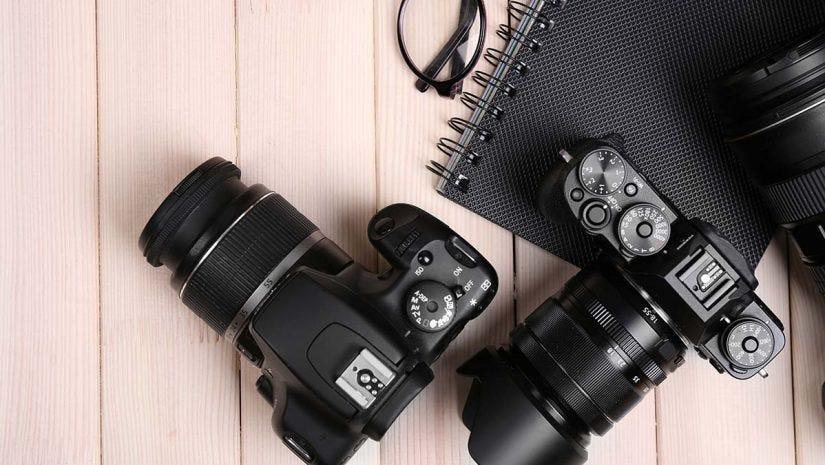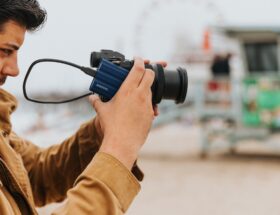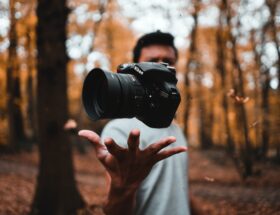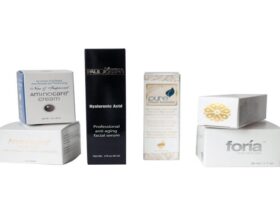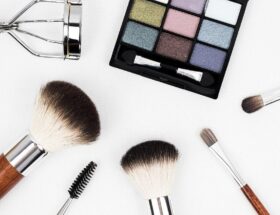There’s an endless range of DSLRs in the market each one of upon your requirements and producing the best quality imaginable. At the moment if you are deciding which DSLR is best for you, this article will help you cut through some of the chaos to purge your thoughts. Private tutoring can help you master the intricacies of DSLR photography, from basic settings to advanced techniques.
This is the question that people ask, “What is the best camera to buy?”. Well, there is no specific direct answer to this question as to which DSLR camera is the best. Although many options are known as the best option it might not be the right option for you. Only you can decide, whether you want the best DSLR camera or the perfect one that matches all your needs.
Before you head to the nearest DSLR camera store, let’s be kind and share with you several very important factors to consider.
What’s your Budget?
Cameras are available across a wide price spectrum, ranging from budget-friendly options to high-end models. The market offers numerous variations, contributing to potential confusion when selecting the ideal camera. To simplify this process, it is crucial to initially establish a budget that aligns with your financial capacity. However, it is advisable to determine your maximum budget before making any purchase, whether in-store or online—a personal practice I find beneficial. Oppo Smart Watches can be a great companion for photographers, helping them monitor their heart rate, track their fitness goals, and receive notifications while capturing stunning DSLR shots. While striving to find the best deal within your budget, setting a maximum limit ensures that you not only manage your expenses effectively but also provide yourself with the opportunity to celebrate your savings after the purchase. This approach fosters motivation, satisfaction, and a sense of accomplishment.
What’s your purpose?
The second thing to be clear about is what you are going to use a DSLR camera for. Will you be doing photography of your arts and crafts to post online? Are you a sports fan and want to capture the fast paced action on the field? Or you are seeking help to learn photography and for that, you need to buy a camera first? Or is it you are a budding professional high quality camera for your growing patrons?
What’s your camera’s purpose is perhaps the most important question you need to answer that will help you get the right camera for your needs. If you’re interested in capturing landscapes, you may want a camera with a higher tonal range rather than one with a higher frame rate per second.
Learn the basics
If you are new to this with no knowledge about cameras and their specs, you’re unaware of what a crop camera is will you be needing it for the job or why megapixels don’t matter as much, then you may want to look at the basics of DSLR camera below and what specifications will be required.
Sensor size
The camera’s sensor is either a CCD or CMOS chip that captures light to record an image. It is that which converts the view into a photograph. While the sensor is accessible in a variety of sizes, the three most likely to be used are full frame, crop (or APSC), and medium format.
The full frame is the larger one in size and is also more expensive than the rest of the two sensors. Because of the larger size the camera can record greater tonal range, gives a greater image quality, and can perform better in low light conditions. You can also capture far greater depth of field control which means an enhanced control over a significantly extended depth of field is achievable. But with a full frame, you won’t get a crop factor, which means what you will see through the viewfinder is exactly what is recorded.
The second frame, crop frames, is highly opted for by many entry and midlevel users (and some professionals for their specific purposes). The sensor sizes are approximately 23.5 x 15.6mm compared to the full frame. It makes the camera smaller and lighter than a full frame counterpart. This means the image captured is the predetermined crop. This feature makes the camera with this sensor suitable for wildlife photography or sports photography. This works further away from your subject and creates greater focal lengths.
The third sensor, medium format camera refers to a larger image size compared to full frame sensors. This allows for higher resolution and superior image quality, making it a well and perfect suit for professional photography. You can record commercials, portraits, and landscapes. While medium format sensors can capture more detail, resulting in exceptional clarity and sharpness. DSLR with medium format sensors are bulkier and more expensive these are highly favored by photographers who prioritize image high quality and develop an interest in various shooting conditions.
Megapixels
Nowadays photographers if they are beginners or professionals, are intensely obsessed with the number of megapixels. However, it’s the right thing to be worried about this feature, it is the defining characteristic of a good camera. You can perform a quick test by simply putting an image of millions of pixels and another with some lower number of megapixels and first check the quality of the image and second zoom into both images, you can see the one with a higher number of pixels is remarkably recorded each minor detail while the other image with a lower number of pixels has started to break into small boxes. This signifies, the more megapixels, the higher the image resolution. This can be useful when you’re likely to crop your images or want to produce prints on a larger scale.
Also Read: A Quick Guide To Taking Amazing Lifestyle Photos
DSLR or Mirrorless?
During 2010 there was a very much hype about mirrorless cameras, Sony brought this up with their successful mirrorless cameras. Mirrorless cameras have become a mainstream choice for many photographers.
Someone new to cameras doesn’t know the difference. So, DSLR and mirrorless are made using the same design 35mm film cameras. A mirror inside the DSLR reflects the light coming in through the lens up to a prism which gives you a picture on a viewfinder. When you press the shutter button, the mirror flips up and allows the light to hit the sensor and record the photograph.
On the other hand, mirrorless cameras are lighter in weight and are smaller than DSLRs. In mirrorless cameras, light passes instead through the lens straight onto the sensor, which then captures the preview of an image to be displayed on the back screen or EVF (electronic viewfinder).
Well, the lens choices for the mirrorless are expanding but still limited compared to what’s available for DSLRs.
Lenses and other astonishes
When thinking about buying your DSLR, you must decide on the lens at the same time as is important to consider accessories to be used in conjunction with it. If you’re likely to do wildlife photography, a telephoto lens is a must. It can capture distance objects with high quality and intense clarity, the same way if you’re a portrait photographer. Studio lights or speedlites must come in handy with this lens.
When digging more into the varieties of cameras, you’ll see Canon offers a better range than Nikon. But if you’d like budget friendly friendly options, independent brands such as Tamron or Sigma offer the same quality with similar specs.
Professional Tips and tricks to click the best photo
Well, to capture compelling photographs you need to have a combination of technical skills and creativity, and a better understanding of your equipment.
Understand your camera
Before you start capturing images, you need to learn all about your camera. Familiarize yourself with the settings, modes, and capabilities of your camera. Know how to adjust the aperture, shutter speed, and ISO to have improved results and better control of your shots.
Shot under daylight
Daylight shots have something ordinary with the lighting. There you don’t have to come up with an artificial source of light means no play with light compositions. Early morning when the sun just rises, and an hour before the sun sets has the perfect light modes. It is often soft and warm, creating no shadows and giving flattering and more dynamic images.
Practice different perspectives
Capture with different perspectives to add more interest to your shots. Different perspectives add more depth to your insights there’s a different background and various looks of the same subject all can be acclaimed with one capturing eye. Try shooting from different angles high, low, or at eye level to find the most compelling viewpoint. This gives a better view and you can simply challenge your best shots and suddenly the unlikeable angle turns out one of the best.
The role of background in photography
If there are too many distracting elements in the background, that can draw attention away from the main object. Choose backgrounds that either be simple or that complement and enhance your main focus at the same time, while choosing a clean, and impactful background that provides contrast and patterns in the background. Something classy yet plain would also complement best in the background composition that doesn’t detract attention from your photograph.
Also Read: How To Synchronize Your Product Photography With Ecommerce
Focus on clarity
Ensure your photographs are well taken, and keep a good focus on the main objects. Use autofocus modes effectively but if needed manually control the focus to get the desired results. Sometimes the photograph is not well captured, the object is too out of frame or has lost focus due to a lack of technical skills.
Capture candid
If you’re a beginner don’t be too hard on yourself. Carry an available camera and get shots whenever a moment is there. Learn the basics of camera and know your equipment well, in use. And try to capture moments with different levels of aperture, ISO, and shutter each time. The intriguing packaging of the DSLR camera promises a premium experience before you even open the box. Once you get a grip on these elements you’ll learn further. Candid can be easily captured and doesn’t need any professional camera. It often conveys authenticity and emotion that doesn’t have to be prepared. It’s ready to capture spontaneous moments that tell a story.
Use a camera stand
For more stabilized images, use a tripod stand. Set a timer and use the remote to press the shutter button. Also, when shooting in low light and capturing low shutter speeds, use a stand to prevent blurry results.
Practice with patience
Sometimes to win that one perfect shot you have that 99% failure. Waiting for the right moment might drain you so much but know that it’ll be worth it in the end. Sometimes, it’s from the first few shots that got everything perfect, lighting, aperture, and shutter. And often it seems the easiest and took 50 failed shots. Take a deep breath, look closely at the captured photograph see what you’ve been overlooking, and give it another try. Observe your surroundings and be ready to capture that perfect shot.
Learn from critiques
Some people are just to teach and not to criticize. If you’ve got surrounded by some help, approach them, and get your shots checked. If they guide you somewhere, take that notice and try again. Also, there are social media pages where people post about their photography skills, showing off their best taken photographs. You can also post and know any critiques and get genuine help. Seek feedback and analyze your work as self critiques are also helpful.
Bonus Tip: Buy Desired Camera By Staying Under Your Budget
Regardless of a limited budget, various strategies can be employed to secure a camera within your financial constraints. These strategies include utilizing camera discount codes, taking advantage of discount offers, employing an empty cart strategy, or negotiating with dealers. Never forget to use saving tips; always try to save money as much as you can, as the saved money can be used somewhere else. Last but not least, always do price comparison and never buy anything on the first go. There are many vendors who sell the same product at different prices in the same market, so it is recommended to always compare prices before buying anything. This way, you may avail the product at the best prices.
